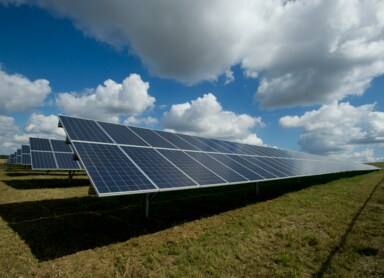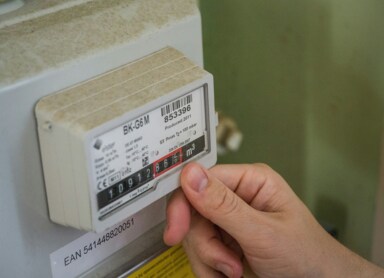The Renewable Energy Directive (RED II) – what is it about, and what is its significance? Here's an explanation!
The European Union continuously seeks ways to reduce greenhouse gas emissions. One of the methods is to increase the share of bio-components in fuels used in sectors like transportation. This approach aims to improve air quality. To achieve this, the content of a directive called RED II was developed. What exactly does RED II aim to change, and can Poland successfully implement it?
RED II Directive – introduction and significance in the context of European energy policy
The Directive of the European Parliament and of the Council (EU) 2018/2001 of 11 December 2018, on the promotion of the use of energy from renewable sources (also referred to as the RED II directive or the biofuel directive), sets goals for the consumption of biofuels within the economy for a ten-year period, from 2021 to 2030. It emphasizes the production of fuels from biological waste, which increases the importance of biofuel components. Bio-components are additives to fuels that aim to improve air quality by reducing harmful gas emissions. They are derived from raw materials such as beets, corn, wheat, and rapeseed.
But that’s not all. The RED II directive also references the concept of a closed loop economy, where waste can be transformed into valuable raw materials. In this regard, EU legislators require certification, such as Blue Angel or ISCC+.
It's worth mentioning that although legislation to implement RED II into national law has already appeared on the legislative agenda, Poland is significantly delayed in adopting these new standards. The deadline for implementing the biofuel directive passed more than three years ago, at the end of June 2021. Recently, the European Union passed the RED III directive, which aims to increase the share of green energy in the functioning of member states' economies, thereby contributing to the Fit For 55 package.
RED II Directive – key assumptions and objectives of the regulation
The RED II directive establishes a unified system for all member states, promoting the use of renewable energy in sectors such as transportation, electricity, heating, and cooling (the so-called energy mix). The use of renewable energy sources (RES) must constitute at least 32.5% of the total energy mix, with specific goals set for each sector – for example, 14% for transport. By 2030, the share of advanced bio-components and biofuels must increase to 3.5%. This means that both the production and distribution models for fuels must be modernized.
Among the other assumptions of RED II is consumers' right to generate their renewable energy without unjustified restrictions, thereby actively participating in the energy transition, as well as the right to disconnect from inefficient cooling and heating systems.
RED II Directive – biomass and its role in achieving the directive's goals
One of the key concepts in the RED II directive and energy as a whole is biomass. The directive defines biomass as the biodegradable fraction of products, waste, or biological residues from agriculture, including plant, animal, fishing, and aquaculture products, as well as industrial and urban waste of biological origin. Biofuels and biogas are produced from biomass. However, is fuel from biomass always "bio"? It turns out, not necessarily.
First and foremost, such an energy resource must be produced in line with the principles of sustainable development and meet greenhouse gas emission reduction criteria. It cannot come from areas of high biodiversity, as this could harm the environment. Therefore, raw materials for biofuel production cannot be sourced from primary forests or other wooded areas where there are no signs of human activity. Areas recognized as having high biodiversity are also unsuitable, unless the biofuel producer can provide evidence that the production of the energy resource does not harm this biodiversity.
According to the directive, biomass for biofuel production also cannot be sourced from areas rich in carbon, peatlands, or areas where trees taller than 5 meters grow. Of course, there are many more exceptions, but these illustrate the general principle of obtaining biomass. It must be ecological and safe for the environment, and only then efficient.
The RED II directive requires member states to implement procedures to determine the origin of the raw material, restore the forest from which the biomass was sourced, and protect designated areas from harmful human activity.
What happens if biomass is sourced from, for example, a national park, and the fuel produced from it is used in trucks? In this case, the resulting energy resource will not qualify as meeting the EU's emission reduction goals (not to mention local administrative penalties for environmental damage). In other words, it will be equivalent to using conventional fuel without any bio-additives.
RED II Directive in Poland – implementation and challenges on the domestic market
EU regulations set sustainable goals for all member states. This means that both wealthy countries like Germany and France, as well as those considered emerging markets, such as Poland, should meet them. Where does Poland stand concerning EU guidelines? To assess this, it's worth looking at the Polish Energy Policy until 2030 (PEP 2030) document, as it aligns with the RED II goals in terms of timeline. The main objectives of PEP 2030 include:
- Increasing the share of RES in final energy consumption to at least 15% by 2020;
- Achieving a 10% share of biofuels in the transport fuel market by 2020, as well as increasing the use of second-generation biofuels;
- Protecting forests from exploitation and sustainably using agricultural land to source biomass.
Whether these goals have been achieved is evidenced by the fact that Poland was one of the few countries to vote against the Fit For 55 package and the successor to the RED II directive – RED III. The Polish economy is striving to catch up with the sustainable development goals, but given the intensive coal mining, it will take some time before Poland can fully implement EU guidelines.
RED II Directive – biofuels: significance and impact on the biofuel market's development
Regardless of the country's raw material strategy, your company can start using biofuels now. By committing to sustainable development, you not only contribute to environmental protection but also achieve ESG (Environmental, Social, and Governance) goals. If you are required to report in this area, using biofuels will undoubtedly serve as a strong argument that your business is a conscious market participant committed to ecology.
It's essential to remember that implementing the energy transformation should happen gradually. Plan your next steps carefully and watch how your business evolves!






